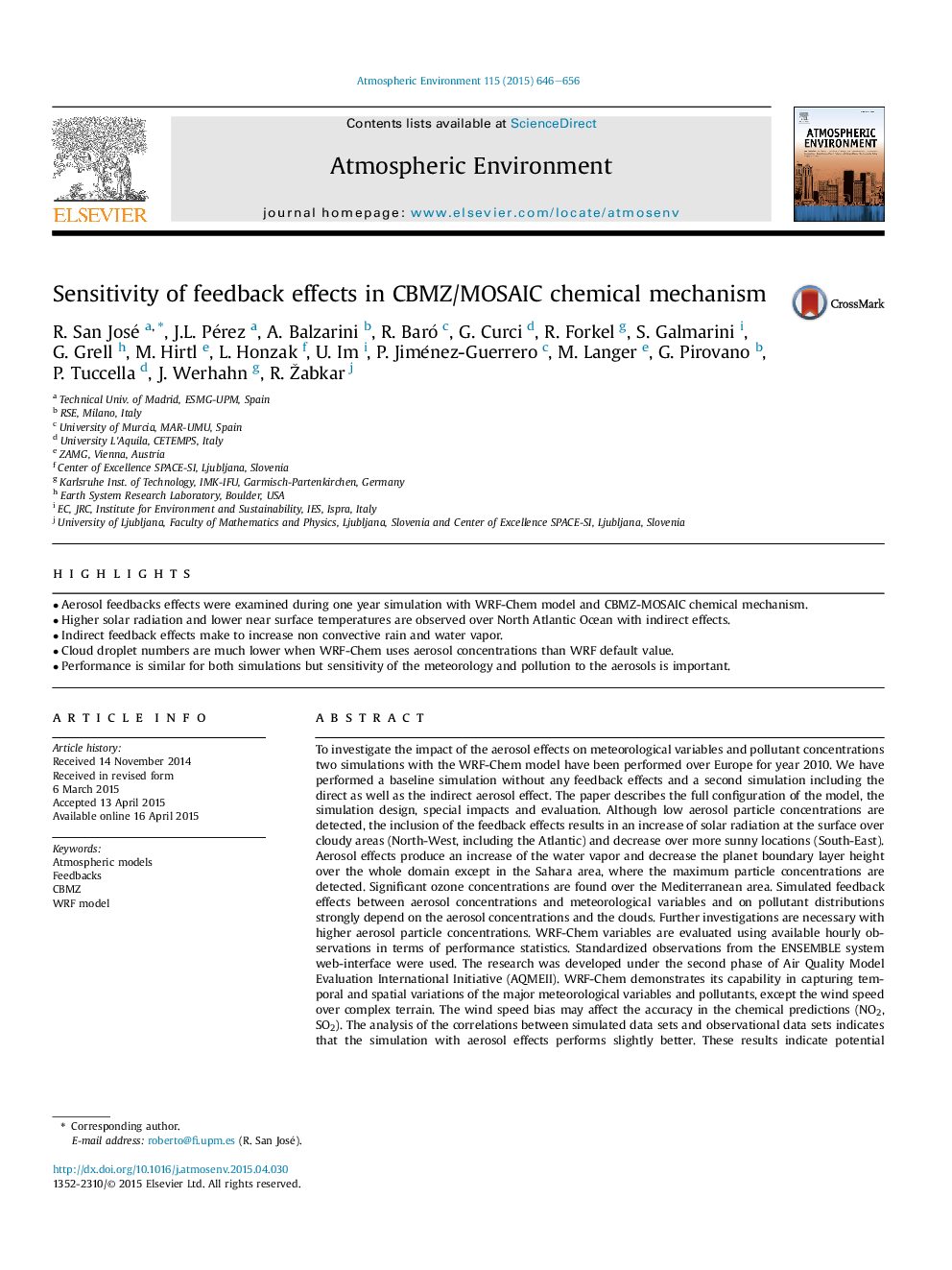| Article ID | Journal | Published Year | Pages | File Type |
|---|---|---|---|---|
| 6337906 | Atmospheric Environment | 2015 | 11 Pages |
Abstract
To investigate the impact of the aerosol effects on meteorological variables and pollutant concentrations two simulations with the WRF-Chem model have been performed over Europe for year 2010. We have performed a baseline simulation without any feedback effects and a second simulation including the direct as well as the indirect aerosol effect. The paper describes the full configuration of the model, the simulation design, special impacts and evaluation. Although low aerosol particle concentrations are detected, the inclusion of the feedback effects results in an increase of solar radiation at the surface over cloudy areas (North-West, including the Atlantic) and decrease over more sunny locations (South-East). Aerosol effects produce an increase of the water vapor and decrease the planet boundary layer height over the whole domain except in the Sahara area, where the maximum particle concentrations are detected. Significant ozone concentrations are found over the Mediterranean area. Simulated feedback effects between aerosol concentrations and meteorological variables and on pollutant distributions strongly depend on the aerosol concentrations and the clouds. Further investigations are necessary with higher aerosol particle concentrations. WRF-Chem variables are evaluated using available hourly observations in terms of performance statistics. Standardized observations from the ENSEMBLE system web-interface were used. The research was developed under the second phase of Air Quality Model Evaluation International Initiative (AQMEII). WRF-Chem demonstrates its capability in capturing temporal and spatial variations of the major meteorological variables and pollutants, except the wind speed over complex terrain. The wind speed bias may affect the accuracy in the chemical predictions (NO2, SO2). The analysis of the correlations between simulated data sets and observational data sets indicates that the simulation with aerosol effects performs slightly better. These results indicate potential importance of the aerosol feedback effects and an urgent need to further improve the representations in current atmospheric models to reduce uncertainties at all scales.
Keywords
Related Topics
Physical Sciences and Engineering
Earth and Planetary Sciences
Atmospheric Science
Authors
R. San José, J.L. Pérez, A. Balzarini, R. Baró, G. Curci, R. Forkel, S. Galmarini, G. Grell, M. Hirtl, L. Honzak, U. Im, P. Jiménez-Guerrero, M. Langer, G. Pirovano, P. Tuccella, J. Werhahn, R. Žabkar,
